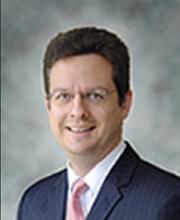

Ian Riches is Vice President of the Global Automotive Practice at Strategy Analytics. He heads research teams that covers all aspects of embedded automotive electronic systems, semiconductors and sensors on a worldwide basis.
His direct areas of research include powertrain, chassis, safety, security and body applications – including high-growth areas such as hybrid and electric vehicles, advanced driver assistance systems and autonomous vehicles. He also overseas teams involved in the analysis of infotainment, telematics and connected mobility solutions.


Bio coming shortly
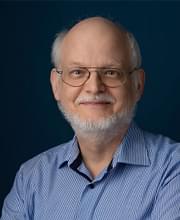

Bernd Jähne is Professor of Physics and Computer Science at Heidelberg University. He was coordinating director of the Heidelberg Collaboratory for Image Processing (HCI) at the Interdisciplinary Center of Scientific Computing (IWR), an "Industry-on-Campus" project of Heidelberg University from 2008 to 2017 and was then appointed as a Senior Professor. Since 2008 he chairs the EMVA 1288 standardization group and since 2021 he is vice president of the European Machine Vision Association (EMVA).


Richard Schram studied at the Eindhoven University of Technology in the Netherlands, after which Richard continued to working at TNO Automotive. He got involved in vehicle crash safety research and development in both the passive and active safety field.
Since 2010, Richard is Technical Manager of the European New Car Assessment Program, where he is the technical lead for protocols currently in place as well as the development of future requirements for both passive active safety test- and assessment protocols.

Ross joined ON Semiconductor in 2015. In his current role as vice president and general manager of automotive sensing, he oversees a $450 million automotive and medical sensing business unit, in which he grew 2x from 2015-2018, bringing the total global share to over 60%. As a hands-on leader, Ross is involved with all aspects of the business unit, including product development, finance, marketing, operations, engineering and customer support. With his approach, he expanded the product portfolio to include additional sensing modalities to include all major sensors needed for autonomous driving (LiDAR, radar and imaging). He also introduced the first Neural Network processor for the organization to support edge AI applications.
Prior to ON Semiconductor, Ross worked for NVIDIA Corp. for 14 years, with his last role being the vice president of automotive engineering. He has also held various design engineering roles at Amphenol and 3Com, and hardware engineering positions at USRobotics and IBM.
Throughout his career, Ross has built a proven history of transforming research and development projects into high yield products. With his focus on the automotive industry for the past 10 years, he has gained a deep knowledge of automotive systems and the semiconductor industry, including successfully developing multiple automotive solutions to mass production. Ross also engages in thought leadership through multiple talks at social and professional conferences.
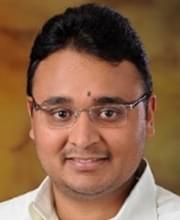

Bharanidhar Duraisamy has started as a M.Sc. Robotics and Automation student with Daimler AG’s research and development department. After completion of his Doctoral tenure in the area of automotive multi-level sensor fusion based on several active and passive environment perception sensors, multi-sensor data association designed for state estimation and signal processing designed for automotive intelligent vehicular applications. At present he is working as a research and development engineer focused on target tracking and fusion activities in the team specializes in various level of signal processing work related to automotive Radar.


Roland Mattis has 40 years of experience managing hi tech companies in Europe, Asia and Israel and joined a year ago , the team of one of the most promising European deeptech automative strartup Fastree3D with a really unique value proposition, that creates a completely new family of sensors , with unique characteristics. These sensors will be in the markets starting 2021.


Working experience:
1996 - 1998 Design Engineer Hardware and Firmware Ansari
1998 - 2003 Design Engineer Hardware and Firmware Ibeo Lasertechnik
2003 - 2009 Head of Sensor Development Ibeo Automobile Sensor
2010 - present Head of Sensor Development, Co Founder and Share Holder Ibeo Automotive Systems
Scientific education
1992 - 1995 Dipl Ing . Electrical and Electronic Engineering
University of Applied Science Hamburg
1995 - 1996 BEng Hons in Electrical and Electronic Engineering University of Portsmouth (UK)
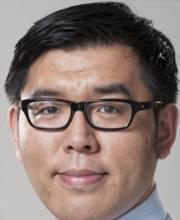

Dr. Leilei Shinohara joined RoboSbense in January, 2019. He is responsible for the Automotive LiDAR development. He has more than ten years experiences with LiDAR development crossing the phase of advanced development and research, standardizing, customer specific development, and the transaction from R&D towards to massive production.
From 2015 to 2018, he was the Technical Lead for Asia OEMs at Valeo, and was responsible for automotive LiDAR, automotive active safety products, and sensor fusion. He was responsible for a development team with systems, software, hardware, mechanics, testing/validation, and functional safety for the first automotive grade LiDAR product “Valeo Scala”.
In 2008, Dr. Shinohara began his PhD studies at Karlsruhe Institute of Technology in Germany, and received his PhD degree in Electrical and Electronics Engineering in 2014. During six years of PhD studies, Shinohara focused on LiDAR systems and was involved in several projects, including optical sensor system design, optical quality measurement, Doppler LiDAR, and 3D MEMS micro-mirror LiDAR for autonomous driving.


Sebastian studied industrial engineering in Weiden and Adelaide, and holds an MBA from the UTD & FH Landshut. He has worked in the LiDAR industry for over 6 years with stations at Osram OS where he was responsible for pulsed lasers for LiDAR. At Broadcom IFPD, Sebastian has changed to the receiving side and drives the APD and SiPM business for LiDAR.


Pawel E. Malinowski received an M.Sc.Eng. degree in electronics and telecommunications (thesis on design of radiation-tolerant integrated circuits) from the Lodz University of Technology, Poland, in 2006. In 2011, he received a Ph.D. degree in electrical engineering from the KU Leuven, Belgium (thesis on III-nitride-based imagers for space applications).
Pawel has worked imec since 2005, and in the Large Area Electronics Department since 2011. Currently, he is Program Manager “User Interfaces & Imagers” and he focuses on high resolution OLED displays and thin-film image sensors.
Pawel has authored or co-authored more than 30 publications. He was a recipient of the International Display Workshops Best Paper Award in 2014 and the SID Display Week Distinguished Paper Award in 2018


Ms R.M Vinella Electronic Engineer, PhD Started in Xenics in 2011 as ROIC design Team Leader Since 2015 Project and Technical Account Manager at Xenics focusing on development of SWIR sensors and cameras.


Keita Suzuki received his B.S. and M.S degree in electrical engineering from Waseda University, Japan, in 1997 and 1999, respectively.
He has started his career as CCD image sensor designer in Sony Corporation since 1999 and he designed and developed products for various application as project leader and manager.
He has been engaged in the development and business of CMOS image sensor since 2011. He has 20+ years experiences in image sensor field.
Since 2020, he has been Deputy General Manager of SSS Europe Design Centre, Sony Semiconductor Solutions Europe.
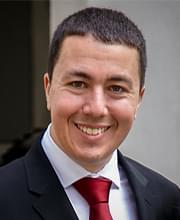

Noam has over 10 years of experience in R&D and holds a Ph.D. in Applied Mathematics from the Robotics Lab at Weizmann Institute of Science. Prior to Arbe, Noam has led the algorithm development at Taptica and the Space IL control system. Since founding Arbe in 2015, Noam and his team have been developing a proprietary high-resolution radar chipset, a revolutionary technology capable of unlocking level 3 and higher autonomous driving.


Modar is an artificial intelligence (AI) expert technologist and leading figure in computer vision AI for human behavior understanding, modeling and prediction. He is currently the founder and CEO of Eyeris, the worldwide pioneer and leader of In-vehicle Scene Understanding (ISU) AI inside autonomous and highly automated vehicles (HAVs). Modar combines over a decade of experience in computer vision and applied human-centric AI for a wide range of enterprise applications. His work focuses on bridging human-machine interaction with predictive invisible interfaces through body, face, object and surface understanding AI. He is a frequent speaker and keynoter on “human-centric ambient intelligence” as the next frontier in AI. Modar graduated from Concordia University Montréal, with a concentration on Human Behavior Understanding (HBU) using artificial intelligence technologies. He is a winner of several international technology and innovation awards and has been featured on Bloomberg, The Wall Street Journal, Wired, Time magazine, CNBC, Reuters, Fast Company and many major international media publications spanning 12 different languages for his work.


Upton Bowden leads Visteon product marketing and strategy planning. Upton has over 29 years of automotive electronics experience including design, manufacturing, marketing and technical sales. He focuses on the development of technologies enabling autonomous driving and the application of artificial intelligence in next generation mobility solutions and holds over 20 patents. Upton holds a BSEE from the University of Michigan in addition to an MBA from Wayne State University.


Markus Adameck is General Manager at Panasonic Automotive Systems Europe since 2014. Panasonic is one of the worldwide leader in automotive Camera Systems. He supports the European Panasonic Advanced Driver Assistance System (ADAS) Business and is in charge for Customer Project Management and Development.
Markus has around 20 years’ experience in Development of ADAS Camera Systems supporting Object Recognition and Classification. He introduced first Single-Chip CMOS camera into automotive. In his professional career he was working for several Tier1 suppliers like Hella (2002), Magna Electronics (2006), and Continental (2012). Markus received his Physics Diploma in “Nonlinear Optics” and his PHD for the Development of “High Speed 3D Camera Scannig Systems” in Hamburg Germany.


Raul is a serial entrepreneur. He has created four companies in different fields in the mobile robotics space for warehouse automation and autonomous driving 3D perception. He has hired 200+ people and raised over $125 million including an IPO.
Raul has obtained 35 different awards for his engineering and entrepreneur career, among them as best Spanish Engineer and the MIT Technology Review – Top 10 Innovators Under 35 and filed 27 patents.


Filip Geuens is CEO of XenomatiX and former CTO of Nikon Metrology. He is a mechatronics engineer from the university of Leuven and spent his entire career to optical metrology systems. He presents quite regularly and participates to IS Auto Europe and US since 2015.
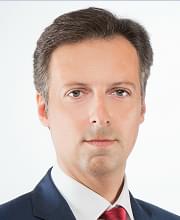

Professor Dr Anestis Terzis is the Head of the Institute of Communication Technology at Ulm University of Applied Sciences in Germany and the coordinator of the university's International Electrical Engineering Program (IEEP). His professorship is for Digital Systems Design in lectures and research. His primary research field is advanced camera-based driver assistance systems and HW architectures. Prior to this, he was with Daimler AG for ten years and worked in the "Group Research & Mercedes-Benz Cars Development," with a main focus on future advanced driver assistance systems. Anestis Terzis received his diploma in Communications Engineering from Ulm University of Applied Sciences and his doctoral degree in Electrical Engineering from the University of Erlangen-Nuremberg. He is one of the authors of the ISO 16505 content and an expert member of the standardization and regulation committees in the field of camera monitor systems. He is the editor of the "Handbook of Camera Monitor Systems - The Automotive Mirror-Replacement Technology based on ISO 16505" published by Springer.
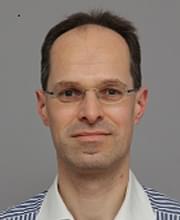

Rogier van Aken is a Research Engineer at Siemens Digital Industries Software in the group that develops physics based sensor simulations for Simcenter Prescan. Simcenter Prescan is a leading simulation platform for the testing and development of autonomous vehicle functionality. His current research activities are focused on the verification and validation of automotive sensor simulations, including camera, lidar, and radar simulations. He started his career with a PhD in electron optics; development of novel instrumentation for electron microscopes. Before joining Siemens in 2018, he worked many years at Thales on R&D, Systems Engineering and consultancy projects in the field of radar and communication technology and related subjects.


Mahabir Gupta is Solutions & Products Consultant - IoT, Mobility & Data Security at Volvo - having more than 5 years of experience in software development and security evaluator experience in a broad range of industries including automobile, healthcare, construction, e-commerce, banking, IOT, and mobile gaming. He has solid understanding of full mobile and software development life cycles, penetration testing, EMVCo & PCI guidelines, security threat and agile methodologies. He is mobile passionate with extensive knowledge in defining project scope, requirement, technical specification and designing security threat of the architecture of the application.
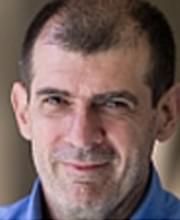

Zoran Nikolic got his PhD from University of Miami in 1996. In 2015 He joined Nvidia as a Principal Architect for Tegra Product Architecture working on next generation of SoC architectures for Autonomous Driving. Zoran’s primary focus is mapping requirements of the next generation automotive imaging and radar sensors to Tegra SoC. Zoran is also involved with Euro NCAP roadmap and protocols and represents Nvidia in Euro NCAP mirror work-groups.
Prior to Nvidia Zoran was with Texas Instruments (TI) for 18 years. In 2005 Zoran cofounded the Advanced Driver Assistance Systems (ADAS) group inside Texas Instruments. Zoran was Computer Vision Chief Technologist in TI and he played an instrumental role in defining ADAS roadmap, building customer base and growing this business from zero to tens of millions of ADAS SoCs devices on the road.
Zoran has computer vision, digital signal processing and automotive background and tremendous industrial experience of making computer vision technology valuable including putting vision into the car. Zoran published several book chapters, and papers in peer reviewed magazines. Zoran is member of steering committee for Embedded Vision Workshop held in conjunction with CVPR